A marketing holiday calendar in Japan is a schedule that lists all the different holidays and special dates throughout the year. It’s very useful for businesses because it tells them when it’s a good time to advertise and promote their products, services, or special deals to boost sales in the Japanese market. By preparing an e-commerce holiday calendar for your business in Japan, you can get organised and build your marketing campaigns more efficiently all year. Whether you are doing digital or influencer marketing, this calendar will be very helpful.
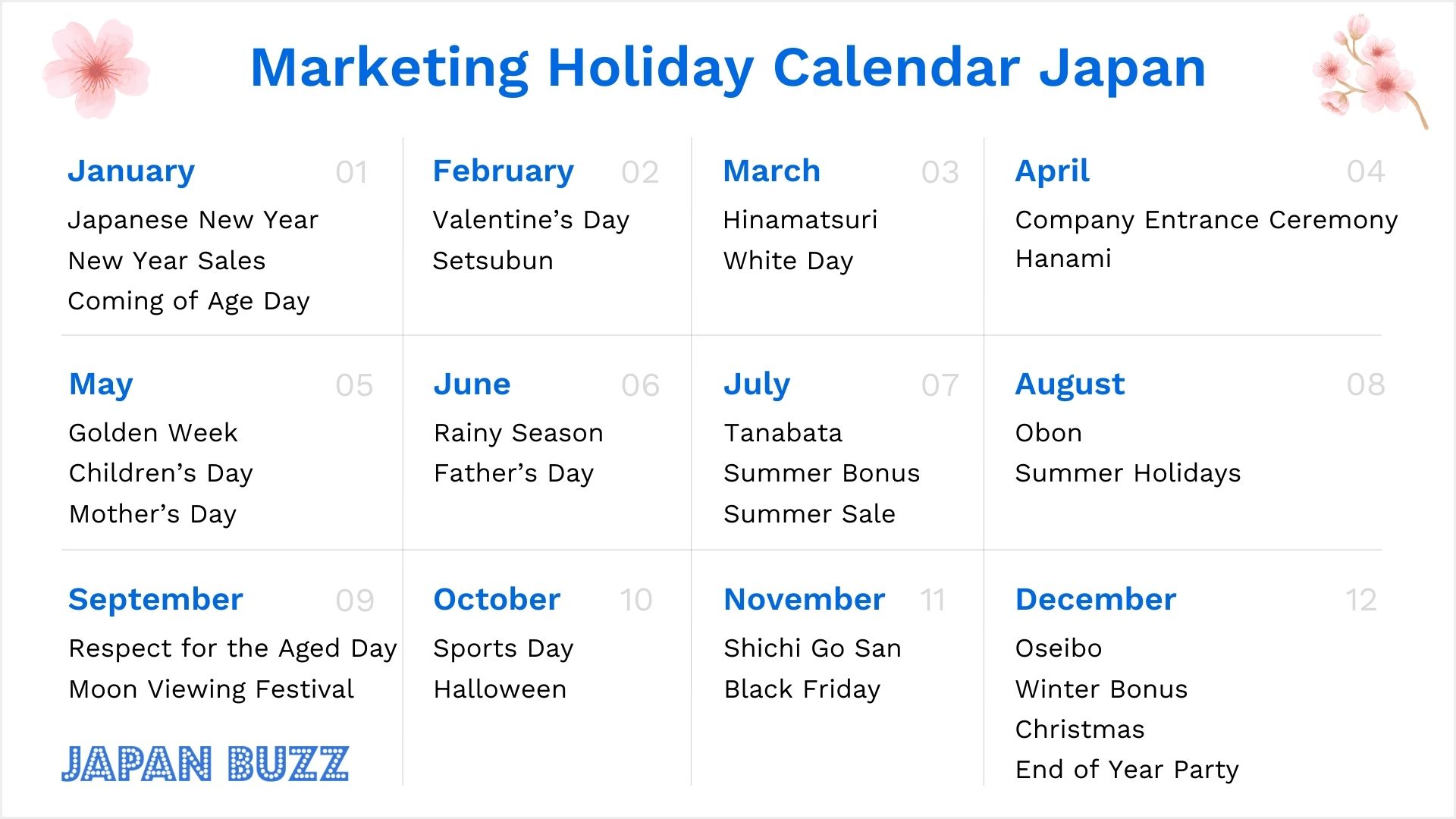
In this article, we’ve prepared a marketing calendar that you can use in 2024. We included holidays and special dates month by month in Japan over the course of the year, along with some tips and insights for effective marketing. Generally, the most important marketing holidays in Japan are New Year Sales, Valentine’s Day, Golden Week, Summer Sale and Christmas.
A well-organised marketing plan can be a key to success. However, creating a marketing strategy that works throughout the year means thinking about many things. For example, Japan has different events and ways of celebrating holidays than other countries. This means that what works for marketing in one country might not work the same way in Japan. Including local customs and planning marketing activities around important events in Japan is a good idea.
Marketing Holiday Calendar to Use All Year Month by Month 2024
January
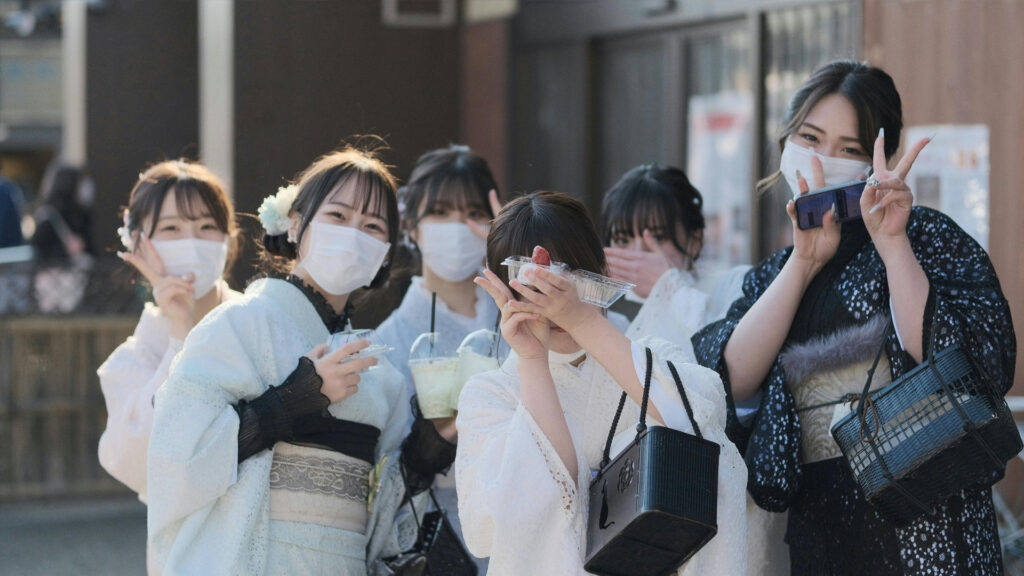
January brings cold, snowy weather to northern Japan, cool temperatures with occasional snow in central Japan, and mild yet comfortable conditions in southern Japan.
Japanese New Year (Oshogatsu)
In Japan, New Year, or “Shogatsu,” is a quiet, family time, different from often loud parties in the West. People visit shrines for the first prayer of the year, get together for special meals, and exchange gifts. They eat “osechi ryori,” make mochi, and put up decorations like kadomatsu and shimekazari for luck. Families watch the “Kohaku Uta Gassen” music show, send New Year’s cards, give kids money gifts (otoshidama), think about the past year, and make plans for the new one. It’s a period for rest, keeping traditions, and hoping for the best.
For businesses, the end of the year is a period for closing out the year’s work, throwing year-end parties (bonenkai), doing a thorough cleaning (osoji), and sending New Year’s cards to clients and partners. Companies often shut down from around December 29th to January 3rd, allowing employees to engage in New Year’s traditions like hatsumode. This break also serves as a moment for reflection, goal setting, and planning. New Year sales and promotions are common, with businesses using the opportunity to maintain relationships through greeting cards and foster a communal spirit in the workplace.
New Year Sales
The New Year is a major sales period in Japan, usually starting around January 3rd as stores open post-holidays. This season features discounts and deals similar to sales in other nations. With winter bonuses in hand, customers are more eager to shop, presenting a prime marketing chance for businesses.
Fukubukuro Lucky Bags
During New Year sales, Japanese stores often sell “fukubukuro,” or lucky bags, filled with assorted store items at a reduced price. Buyers usually don’t see what’s inside until they buy one, making it a fun surprise!
Coming of Age Day (Seijinshiki)
Seijinshiki, held on the second Monday of January, is a significant day in Japan for those turning 20, the age deemed as adulthood. They usually dress in traditional attire, participate in ceremonies, and hear speeches about adult responsibilities. Following the formal events, celebrations with family and friends often involve meals out or get-togethers. It’s a key occasion for young Japanese adults to celebrate entering adulthood.
February
February in Japan has cold and snowy weather in northern Japan, a hint of spring in central Japan, and mild, pleasant conditions in southern Japan.
Valentine’s Day
In Japan, Valentine’s Day, unlike the west is when women present gifts, mainly chocolates but occasionally other items, to men. They buy special gifts at department stores and sweet shops, or make homemade chocolate treats. One month later, on March 14th, White Day occurs, where men return the favor, typically with sweets or sometimes jewelry.
Setsubun (A traditional event to ward off evil spirits)
Setsubun, a Japanese tradition celebrated near February 3rd or 4th, marks the arrival of spring and aims to chase away bad spirits. Participants throw soybeans while reciting chants to cleanse their homes and bring in fortune for the upcoming year. They also enjoy special sushi rolls during this event, which is focused on family gatherings.
March
March marks the transition from winter to spring, with slowly rising temperatures in northern Japan, cherry blossoms blooming in central Japan, and spring-like conditions in southern Japan.
Hinamatsuri (Doll’s Day or Girls’ Day)
Hinamatsuri, held on March 3rd, is a traditional Japanese event aimed at praying for girls’ health and joy. The festival includes unique foods like chirashi-sushi and hina-arare, celebrated for their beauty and colors. At the heart of Hinamatsuri are ‘hina dolls,’ figures of the Empress and Emperor, set up on steps called ‘hina-dan.’ These dolls are a symbol of hope for girls’ wellbeing. There’s also a business side to Hinamatsuri, with special products, restaurant themes, and it acts as a homage to Japanese traditions and a wish for girls’ growth and happiness.
White day
White Day falls on March 14th, a day when men give back gifts to women for the presents they got on Valentine’s Day. These return gifts, often white in color, range from chocolates to love letters. It’s also a big day for shopping, with lots of sales on gifts and chocolates. It’s all about showing thanks and sharing feelings.
April
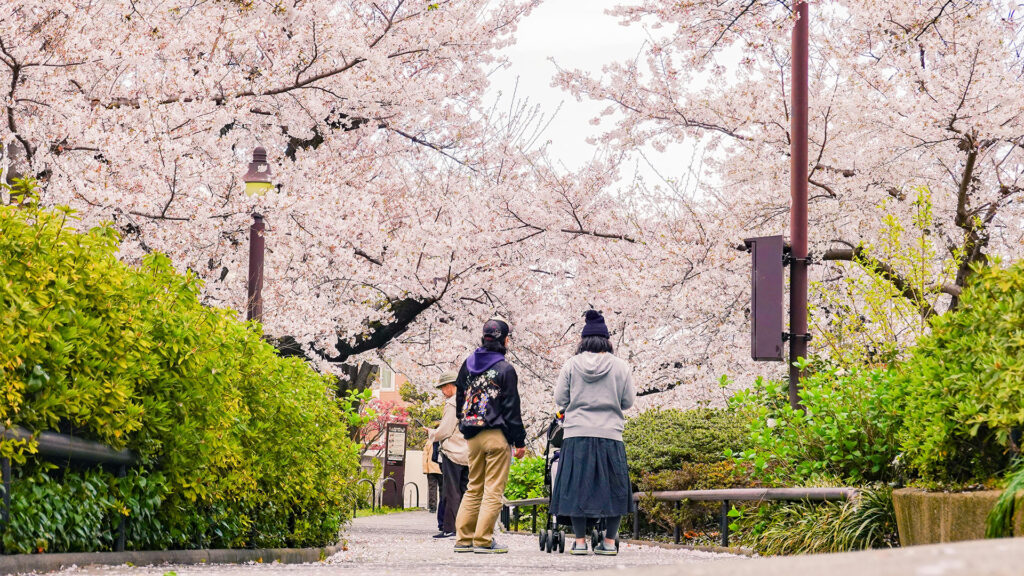
April is a beautiful time to visit Japan with comfortable temperatures in northern Japan, full cherry blossom season in central Japan, and warm and pleasant weather in southern Japan.
Company entrance ceremony
April, marking spring in Japan, signifies the start of the new academic and fiscal year, celebrated with entrance ceremonies across schools and companies, symbolizing new beginnings. Consequently, March concludes the academic year, accompanied by various events. University graduates often embark on graduation trips, with planning and reservations starting around mid-February. This time also sees many individuals relocating for university or employment, leading to a surge in house-hunting, moving activities, and purchases of new furniture and appliances. Additionally, there’s an increased demand for hosting celebrations in honour of graduations and job transfers, making this period bustling with transitions and festivities.
Hanami season
The cherry blossom season in Japan, starting around mid-March depending on the climate, is a prime time for tourism, drawing visitors worldwide to witness the stunning, but short-lived pink cherry blossom landscapes. During this period, locals partake in hanami, enjoy picnics, barbecues, and gatherings under the blooming cherry trees in parks and public spaces. This season also sees a surge in cherry blossom-themed products, with companies launching limited edition items and promoting events centred around the cherry blossoms, making it a culturally rich and economically busy time of the year.
May
May brings warmer weather across Japan, becoming more comfortable in the north, mild conditions in central Japan, and warm and humid weather in the south.
Golden Week (Consecutive national holidays)
Golden Week in Japan is a significant national holiday period from April 29th to May 5th, featuring a series of national holidays that provide a longer break for workers and students alike. This period is a boom for various businesses and industries, sparking an upsurge in travel to tourist spots, hot spring resorts, and participation in events, festivals, and family reunions throughout the country. Both the tourism and retail sectors seize this chance to roll out special promotions and sales, catering to the increased domestic and international demand. Golden Week is widely anticipated as a season of leisure and enjoyment, with many looking forward to the opportunities it presents for travel, shopping, and experiencing cultural festivities.
Spring Thanks Sale
The Spring Sale signals the season’s change, primarily focusing on clearing out winter items such as sweaters, coats, and heaters at reduced prices. It also introduces spring fashion and accessories at promotional prices, aligning with the season’s fresh styles. Additionally, home decor featuring spring designs help to brighten living spaces. The sale extends to home appliances and electronics, offering special deals in anticipation of the new school year and fresh starts. This sale period presents a prime opportunity for consumers to update both their wardrobes and homes with the season’s latest offerings.
Children’s Day
Children’s Day, or “Kodomo no hi,” celebrated on May 5th, is dedicated to the happiness and well-being of children. The display of “koinobori” is marked by colorful carp-shaped windsocks, symbolising the hope for children’s success and strength. Families also indulge in “kashiwa mochi,” sweet rice cakes filled with bean paste, thought to bring good fortune. During this time, businesses tap into the spirit of the day with marketing focused on children’s products and family services, aiming to celebrate and appreciate children and parents alike in Japan.
Mother’s Day
In Japan, Mother’s Day falls on the second Sunday of May, mirroring global traditions of celebrating and showing appreciation for mothers and mother figures. The day is marked by giving flowers, thoughtful gifts, and enjoying time together. Restaurants and cafes prepare special menus for the occasion, while florists experience a boost in sales from those choosing flowers to express their thanks. Retail and online businesses use this opportunity to launch marketing campaigns for gift ideas such as chocolates, beauty products, and customised items, motivating people to convey their love and gratitude uniquely and affectionately.
June
June marks the start of summer, with pleasant weather in northern Japan, occasional rainfall in central Japan, and hot and humid conditions in southern Japan.
Rainy Season (Tsuyu)
June in Japan brings the rainy season, known as “tsuyu,” a time when people stay indoors more due to the rain. This season is good for businesses to promote indoor products and fun activities, like board games, workout gear, and movie streaming, which are great for staying in and avoiding the humid weather outside. “Tsuyu” means “plum rain,” named because it’s the time for plums to get ripe, leading to making plum wines and pickles. Also, June is a big month for weddings, inspired by the idea of a ‘June Bride’ from the West, which is thought to bring good luck in marriage. This increases the need for wedding services, like dress hire, photographers, and honeymoon trips, as couples enjoy the lush, fresh scenery after the rain for their big day. Since fewer people travel, wedding venues are easier to find, making June a perfect time for beautiful weddings.
Father’s Day
In Japan, Father’s Day is observed on the third Sunday of June, following Mother’s Day in May. This day is all about honouring fathers and father figures with love and appreciation. Families celebrate by spending quality time with their dads, giving them gifts, and making special gestures to show their gratitude. Businesses contribute to the festivities by promoting products and experiences tailored to fathers’ interests, such as electronics, gadgets, sports equipment, and outdoor activities. These promotions and gift ideas help families express their appreciation and make lasting memories with their fathers.
July
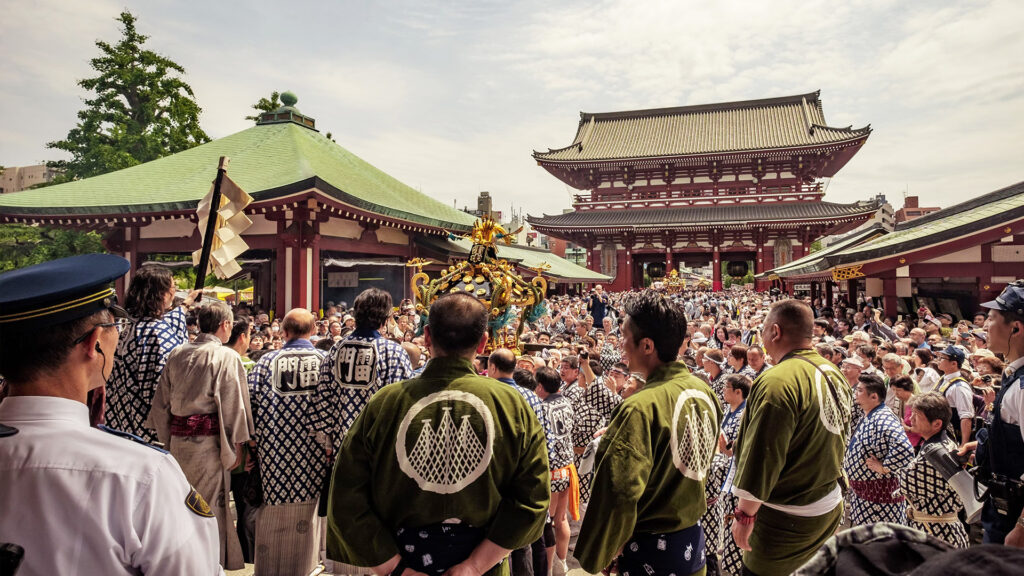
July is hot and humid throughout Japan, with summery weather in the north, heavy rainfall in central Japan, and continued heat in the south.
Tanabata (Star Festival)
Tanabata, or the Star Festival, is a traditional event in Japan celebrated on July 7th, originating from an ancient Chinese tale. It tells of Orihime and Hikoboshi, lovers depicted by constellations, separated by the Milky Way and reunited just once a year on this date. Participants write wishes on tanzaku papers and hang them on bamboo, hoping for fulfilment in areas like health, happiness, or success. Decorations include colourful streamers, origami, and lights, bringing a festive atmosphere to be public and private spaces. The festival features parades, food stalls, and sometimes fireworks, with celebrations varying by region. Sendai’s Tanabata is especially famous for its elaborate festivities. This occasion is a time for reflection on aspirations and enjoying communal joy, marking a significant moment in Japan’s cultural calendar.
Summer Bonus
Summer bonuses in Japan are an annual highlight, offering extra income to employees around June and July. The bonus size depends on factors like salary, length of service, and company performance, sometimes equating to several months’ salary. This tradition significantly boosts Japan’s economy, as people tend to spend more on retail and travel with the extra cash. Employees often use these bonuses for household bills and summer leisure, making them essential for both motivation and improving life quality during the summer.
Summer Sale
The Summer Sale is a much-anticipated shopping event in Japan, usually kicking off in July. Shoppers can find discounts and promotions on various items, from fashion and electronics to home essentials. Department stores and online shops often join in, presenting great bargains. It’s an excellent chance for consumers to refresh their closets, pick up summer necessities, and enjoy savings. It’s an opportunity for businesses to clear out summer stock, increase sales, and draw in more customers during the warm months.
August
August is the peak of summer with warm and sunny weather in the north, summer heat in central Japan, and hot and humid conditions in the south, with possible typhoons.
Obon and summer holiday
Obon is an important Buddhist event in Japan, observed from July 13th to 15th or August 13th to 15th, depending on the region and religious sect. It’s a period of reflection and homage to deceased ancestors. During Obon, families prepare their homes to welcome the spirits of the dead with special decorations and offerings of food. Bon dances, featuring regional variations, are performed in communities to celebrate and honor the spirits on summer evenings. The floating of lanterns in rivers and seas is a poignant ritual, symbolizing the guiding of ancestral spirits back to the afterlife. Visits to cemeteries are common, where families pray and pay respects at their ancestors’ graves. Obon enables family gatherings and reunions, highlighting themes of gratitude, memory, and the enduring bond between the living and the departed in Japanese tradition.
Summer Holidays
The summer holiday season is an economic driver in Japan, benefiting a wide range of sectors. The tourism industry thrives as hotels, inns, restaurants, and attractions see increased visitors. The transportation sector, including bullet trains, planes, buses, and boats, enjoys a boost in demand, enhancing its revenue. Retailers witness higher sales of travel essentials, outdoor gear, and summer attire. Dining establishments, from restaurants to street food vendors, experience a spike in business due to more people eating out. Additionally, the cultural and entertainment sectors gain from the influx of visitors to summer festivals, concerts, fireworks shows, and art exhibits, injecting vitality into local economies.
September
September brings the start of autumn, with cooling temperatures and changing leaves in northern Japan, pleasant early autumn in central Japan, and cooler weather in the south.
Respect for the Aged Day (Keiro no Hi)
Respect for the Aged Day, or “Keiro no Hi,” is a meaningful national holiday in Japan, observed on the third Monday of September every year. It’s a day set aside to celebrate and express gratitude towards the elderly for their lifelong contributions to society. Families gather, community events are held, and individuals show their appreciation with thoughtful gifts and actions. This day highlights the importance of bonds between different ages, encouraging care and friendship for the elderly throughout the year. It’s a sincere homage to the knowledge, life stories, and accomplishments of older people, growing a culture of respect and empathy in Japanese society.
Moon Viewing Festival (Tsukimi)
The Moon Viewing Festival, or “Tsukimi” in Japan, is a popular event held around September or early October to align with the full moon. It’s a time for families to come together outdoors, admire the full moon’s beauty, express thanks for the harvest, and enjoy moments of togetherness in a peaceful, traditional environment. Seasonal treats, especially “tsukimi dango” (moon-viewing rice cakes), are enjoyed, enhancing the festive mood. Some attendees might engage in tea ceremonies, adding to the event’s reflective, calm ambience. The business community also gets involved, introducing moon-themed products and decorations, along with seasonal food offerings, such as moon-shaped sweets and special dining menus for the occasion, enriching the cultural experience of this festival.
October
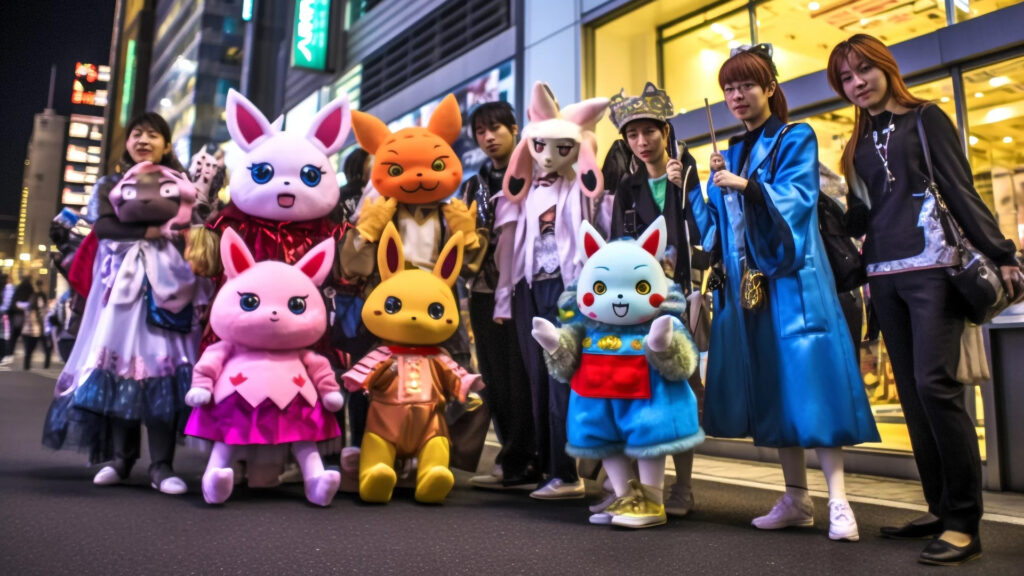
October is delightful with vibrant autumn foliage in northern Japan, picturesque scenes in central Japan, and a gradual transition to autumn in the south.
Sports Day
Sports Day, or “Undōkai,” in Japan is celebrated on the second Monday of October and is a key date for schools across the nation. It emphasises physical health, teamwork, and friendly competition through various athletic events like relay races and tug-of-war. Students spend weeks preparing for this day, and their families come to watch and support them, often bringing along bento boxes to enjoy together. This day is about more than just sports; it’s a celebration of community, school spirit, and the value of working together, highlighting the role of physical fitness and cooperation in Japanese culture.
Halloween
Halloween has gained massive popularity in Japan, especially among the young and children who enjoy dressing up and attending parties. Shibuya becomes a hotspot, bustling with costumed young people. Decorations and themed items fill shops and eateries, while certain landmarks light up with Halloween-themed illuminations, adding a magical vibe to the cities. The tradition of “trick or treating” for candy is also embraced by kids. Additionally, restaurants and cafes craft special Halloween-inspired meals and sweets. The celebration features a range of activities such as parades, costume contests, and horror movie screenings. The events focus on enjoyment, creativity, and engaging in the festive spirit with a unique Japanese twist.
November
November is beautiful with peak fall foliage in northern Japan, picturesque autumn scenery in central Japan, and cool, comfortable temperatures in the south.
Shichi Go San (7-5-3 Ceremony)
Shichigosan is a traditional Japanese celebration for children ages 3, 5, and 7, symbolising key stages in their growth. Families visit shrines to pray for the children’s health and happiness, with kids often dressed in traditional attire. Boys wear hakama and girls in vibrant kimonos. It’s a day for family photos and exchanging gifts like money, toys, and kimonos, mainly from relatives and grandparents. This festival is deeply valued for honouring children’s development and well-being, with special emphasis on girls’ participation. The day is highlighted by charming kimono outfits and detailed photo shoots.
Black Friday
Black Friday is becoming a more popular retail event in Japan, it’s not as well known as in other countries but is gaining popularity, especially among big retailers and online stores. It offers discounts on electronics, clothes, and more. While it lacks the intense excitement seen elsewhere, it’s a chance for Japanese shoppers to save on various items, both in stores and online, as businesses roll out special deals.
December
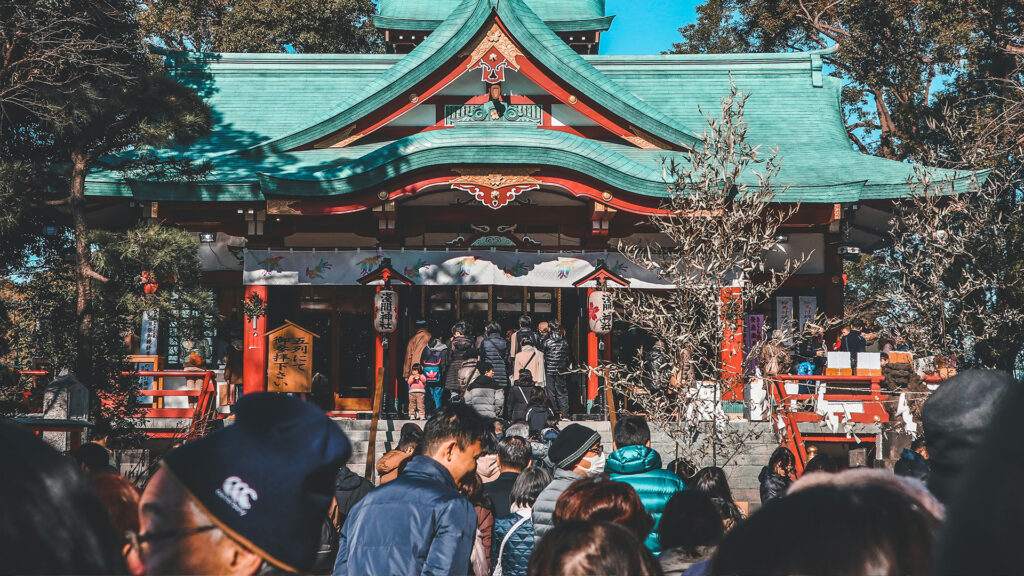
December marks the onset of winter in Japan, characterised by cold and snowy weather in the north, clear and crisp conditions in central regions, and mild, pleasant temperatures in the southern parts.
Oseibo (End of the year gift giving)
Oseibo is a traditional Japanese practice of giving end-of-year gifts to show appreciation to people such as family, friends, business associates, and mentors. This custom takes place from early to late December and involves sending a variety of gifts, carefully chosen based on the recipient’s likes and the nature of the relationship. The gifts are beautifully wrapped and often delivered through courier services, sometimes accompanied by a note or card expressing thanks. Many businesses offer special gift sets for this purpose, highlighting the tradition’s importance in Japanese culture. It’s seen as a way to express gratitude during the festive season, with special attention given to the presentation and personalisation of each gift.
Winter Bonus
In Japan, a “winter bonus” is a year-end payment employees receive in December. Known as “Nenmatsu Choyo,” it’s intended to help cover year-end expenses and recognise employees’ hard work. The amount varies, often based on annual salary, and is taxable. It’s eagerly awaited and used for holiday spending and traditions, but specifics can vary by company.
Christmas
Christmas in Japan is a commercial and non-religious celebration focused on gift-giving, decorations, and festive meals. It’s not a national holiday, but Christmas Eve is particularly popular among couples and young people for romantic outings and gifting. In Japan, Christmas sales start in late November and go on until Christmas, with the biggest deals on Christmas Eve and Day. Shops offer discounts on many items like toys, clothes, food, and wine. Stores and malls decorate with Christmas trees and lights, and online shops offer discounts. There are also special offers like coupons and free gift wrapping, making Christmas shopping in Japan fun and affordable, a great time to buy gifts for loved ones.
End-of-year party (Bonenkai)
A Bonenkai, meaning “End-of-year party” in Japan, is a popular tradition celebrated in December. It’s a way to say goodbye to the old year, forget worries, and look forward to a new beginning. These parties, organised by friends, coworkers, or clubs, are held at restaurants or izakayas and feature plenty of food and drinks. Attendees enjoy chatting, karaoke or games, and sometimes exchange gifts. With speeches thanking everyone for the year and toasts, the mood is festive and friendly, helping strengthen relationships and build excitement for the new year.
New Year
New Year’s Eve in Japan, called “Nengoshikoshi,” is special, with traditions and rituals. Temples ring their bells 108 times to clear away the past year’s problems and wrongs. People prepare Osechi ryori, a festive meal with ingredients that bring good luck. Eating Toshikoshi soba symbolizes a smooth start to the new year. Families gather to hear the New Year’s bell, enjoy Osechi dishes together, and visit shrines or temples on New Year’s Day for blessings. They also watch special TV shows like Kohaku Uta Gassen, making New Year’s Eve a time for Japanese families to come together and welcome the new year.
Conclusion
Holiday marketing presents an excellent opportunity for businesses to attract potential customers, increase their return on investment (ROI), and boost their brand’s visibility. By strategically using the festive atmosphere, companies can position their products and services as ideal solutions for the season’s needs and desires.
Executing marketing strategies during holidays is a wise move to gain attention and entice new customers. Holidays naturally generate an increased interest in shopping and the exploration of new products. Individuals are more open to making purchases, whether for themselves or as gifts for others. This shift in consumer behaviour provides a prime opportunity for businesses to introduce their offerings to a more receptive audience.
Using a marketing calendar for Japan to plan and manage your marketing efforts throughout the year can boost your preparedness and efficiency.
If you’re interested in starting your Japanese marketing campaign, then please get in touch.







